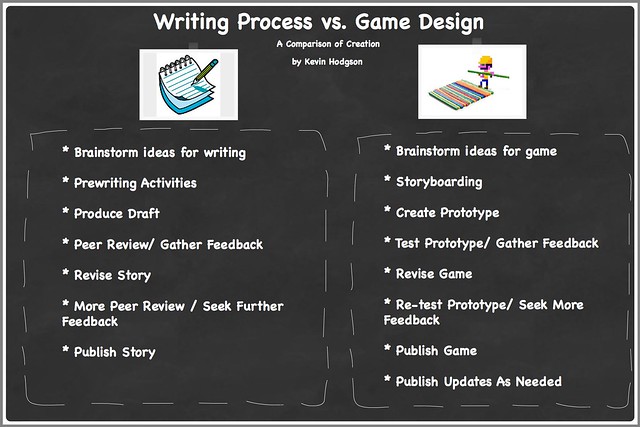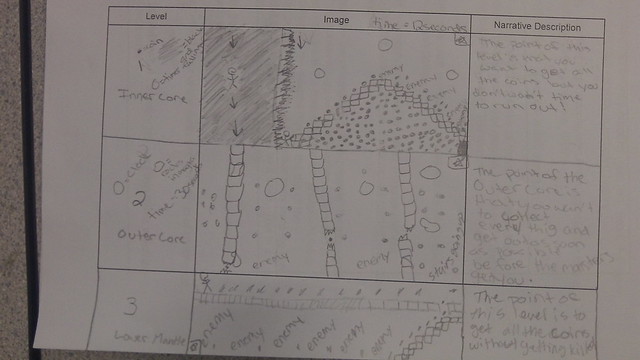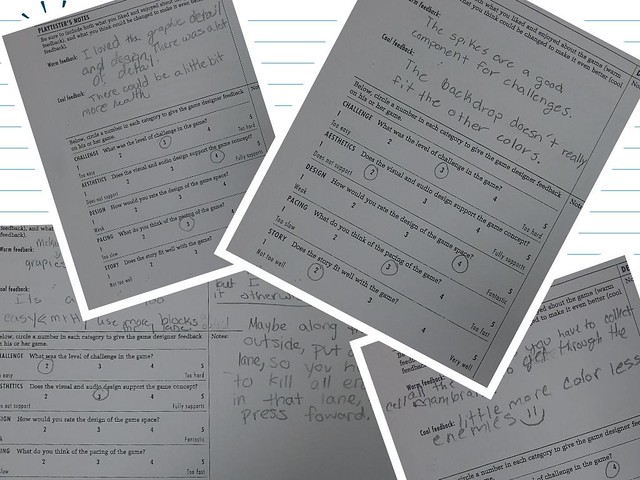We’re near the end of this Make Cycle on gaming for the Making Learning Connected MOOC. There have been some interesting games made and played in the CLMOOC community, as well as some confusion about where to even begin and how gaming might have implications for the classroom.
I’ve long tried to make the pitch to other teachers that engaging students in game design is both a valuable learning experience and a motivating activity. In the first year that my co-teachers and I implemented a game design unit between science and ELA, we set up a website to capture our own learning process and to share resources.
And you don’t need computers, either, to engage in the merits of gaming. Hack a game or invent a game to be played with cards or on the playground.
Or have students engage in persuasive writing about the merits of gaming, or have them write a review about a game they play.
Use storyboarding a game as an analogy for drafting a piece of writing.
Consider game design as a means to teach students about peer review and iterative process.
Connect game design to other curricular areas and then use a site like Gamestar Mechanic to build and publish authentic video games.
Yes, it might be a little uncomfortable for a teacher who is not a “gamer.” I am not a gamer. But I am intrigued by games, and when we do our science-based game design project each year, the hum of learning and activity and engagement is something to behold.
Peace (in the play),
Kevin




Thank you so much for this!! I will disseminate to my Becoming students!!
I am not a Gamer either – but we asked our students to design a game as an active reflection on what they liked best about the course… it was that same buzzy lesson that you describe – and then a few weeks later one of the groups built the game that they had designed into their class ‘performance’: https://noblechloe.wordpress.com/first-year-learning-logs/first-year/learning-logs-21-to-30/learning-log-week-26/
… and re links to writing:
Moseley and Whitty’s 10-steps to design: http://playthinklearn.net/ten-steps-to-game-design/ – only adds the story layer after the prototype of the game has been tested – which can seem bizarre. You can link to drafting and re-drafting writing – for it is much easier to add a story layer at that stage – than to think of all the good ideas at once… so – the first draft was useful, wasn’t it, even though the final draft will look so very different? 😀